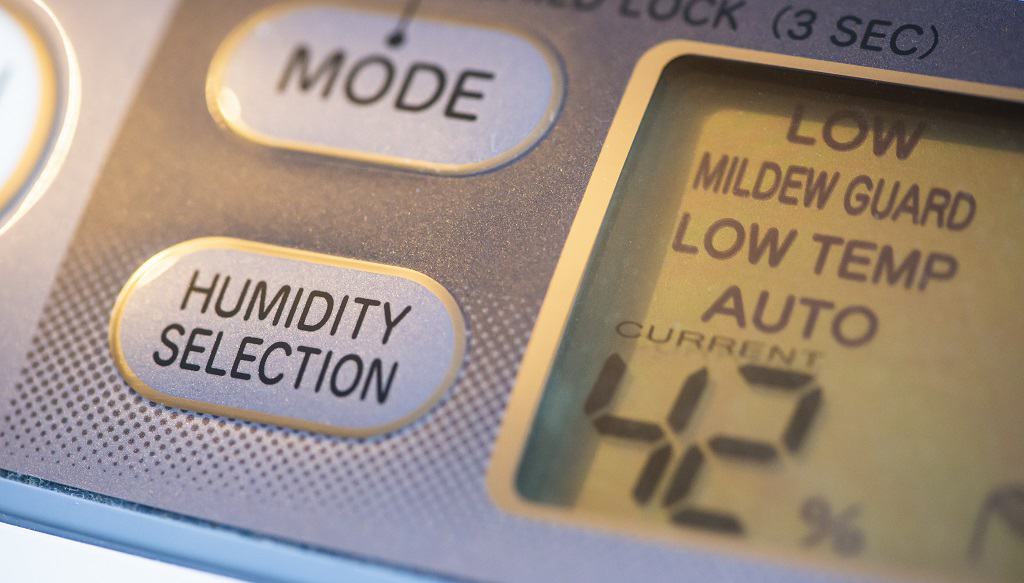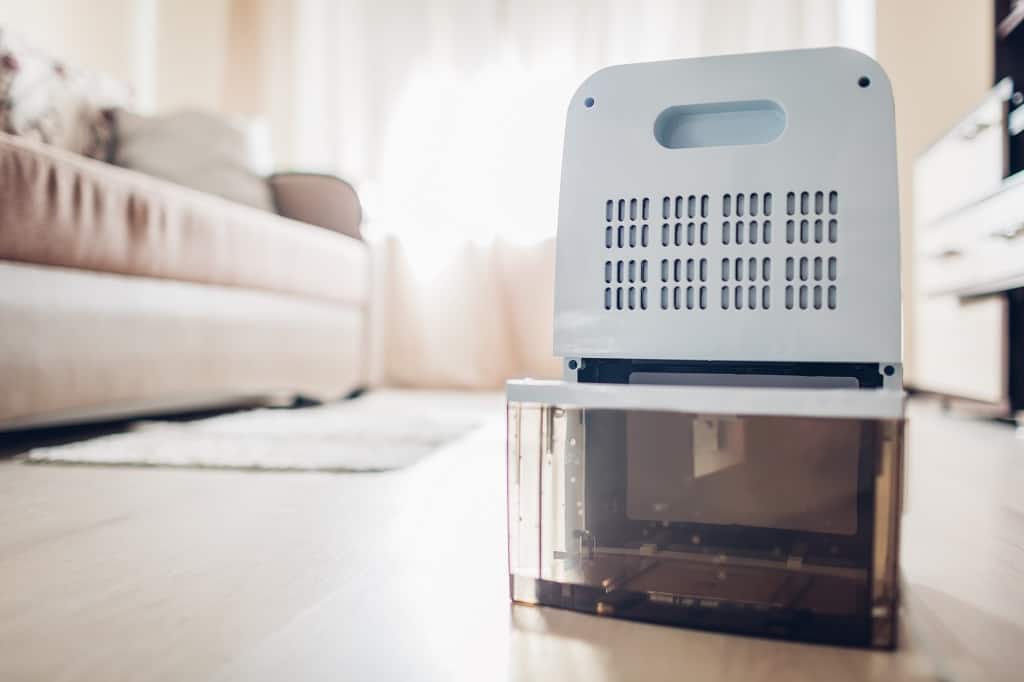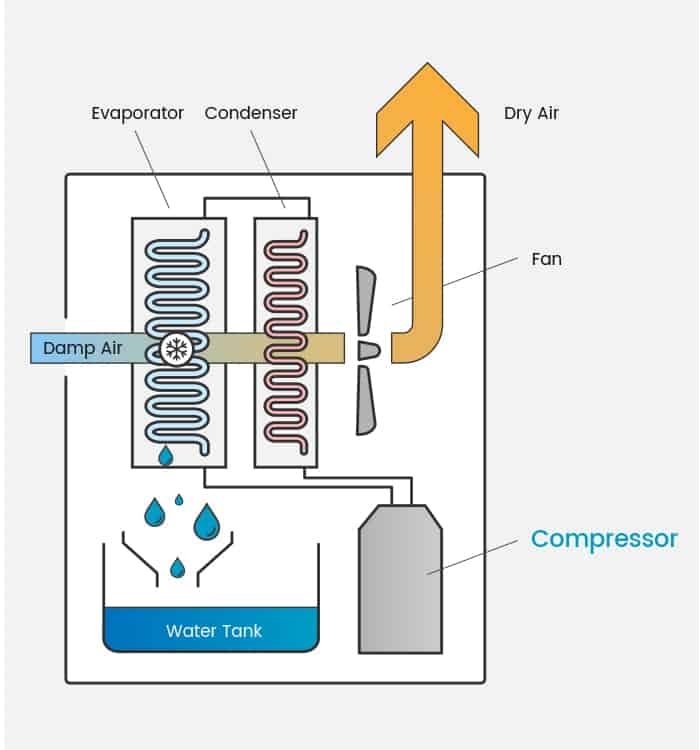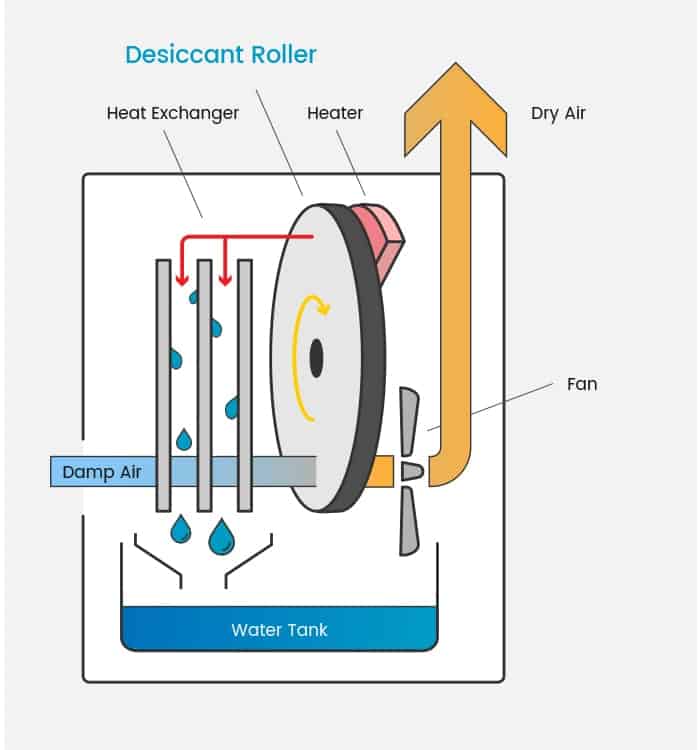A dehumidifier is one of the best solutions for dealing with high humidity levels. They're a relatively simple appliance that are designed to extract moisture from the air. This helps to make your indoor air spaces far more comfortable and livable.
In general, dehumidifiers are louder than other home appliances. Most dehumidifier noise is a result of wind that's generated by the units fan. This noise can be a real nuisance, especially when it's near your bedroom or bathroom.
TOSOT boasts 20 years of experience in researching, designing, and manufacturing dehumidifiers. Needless to say, they know and understand what customers are after when it comes to owning, operating, and enjoying a dehumidifier.
This particular unit is rated for 4,500 square feet, and has a 45 pint capacity rating. It's important to note that TOSOT complies with the recent Department of Energy (DOE) changes for testing compliance (new standard introduced in 2019). They note that their previous (2012 rating) was a 70 pint capacity.
This is a refrigerant style dehumidifier meaning it works best for average temperature spaces. Refrigerant dehumidifiers use a combination of fans and coils to cool and remove moisture from air. This usually results in added noise, however TOSOT notes decibel ratings for the following modes of operation high/medium/low as being 52/50/48 dB respectively.
In terms of the drain bucket, it features a swivel handle and spill resistant baffles. However if emptying drain buckets isn't your thing, they have the option for continuous drainage. You can simply connect a 3/4 inch garden hose and allow gravity to drain the water collection bucket.
This unit is energy STAR certified and UL-approved to meet high levels of safety. It has a power outage restart; In the event that you lose power, it will resume when power is restored. Lastly, the air filter is washable and the user is told when to clean it by an indicator light.
While there isn't much in the way of background information on Waykar, this unit is comparable to the TOSOT model.
This unit is rated for 4,500 square feet and has a 70 pint capacity. We aren't told if this capacity is based on the 2012 or 2019 testing parameters. However, a 70 pint capacity based on the 2012 parameters roughly translates to a 45-50 pint capacity rating based on the 2019 testing requirements.
To further add to the dehumidifying capabilities, the unit has four air outlets, one on each side. This design allows for improved dehumidifying speed. It also includes an added filter to help purify the air. This helps to remove odors, as well dirt, dust, and other debris.
The Waykar unit has a 1.18 gallon water tank that you can both manually drain as well as continuous drain with the provided 6.56 ft drain hose. To note, when continuous drain is not in use, the Full Tank indicator will light up and the dehumidifier will shut off until it has been emptied.
Waykar doesn't specifically note the decibel ratings however, upon emailing them they note:
High speed 45DB LOW speed 41.5DB
Waykar Support Team
These are remarkably whisper quiet levels of operation.
Other noteworthy features include:
hOmeLabs is a well known brand in the world of dehumidifiers. hOmeLabs knows and understands the importance of both function and aesthetic. This unit is designed for the modern home. All their units feature neutral colors to fit any design.
This unit is rated for 4,500 sq ft and has a 50 pint capacity. hOmeLabs notes that this number is based on the new 2019 testing parameters. They also note that their 2012 pint capacity was rated at 70.
This unit maximizes user experience making it super easy to use. Simply adjust your ideal moisture settings. Then allow it to continuously run for 24 hours until the tank is full. If you're not too keen on emptying the collection bin, you can attach a drain hose for continuous draining.
Most notable about this unit is the 2 year warranty (6 additional months for appliance registration). The standard for most units in this category is 1 year. The added warranty tells you that hOmeLabs stands behind their appliances.
hOmeLabs doesn't list decibel ratings but upon reaching out, their support was happy to provide me with answers.
This dehumidifier has a 50 dB rating without the turbo, with turbo mode on it is 57 dB
Faye from hOmeLabs Support Team
This dehumidifier by Hysure is a more compact option, rated for 215 sq ft. It can remove 300 ml per day and has a large 700 ml spill proof water reservoir.
The unit is small enough to fit on your desk or workbench and is best suited for smaller rooms featuring moderate levels of humidity. Due to it's compact nature, it's portable and lightweight.
This humidifier is as simple as it gets. It has one button for operation. Simply pressing the button starts the dehumidifier. Once full, it automatically turns off and an LED indicator light is emitted. The reservoir is also transparent in the back, visibly telling the user when it's full.
The most attractive part about this dehumidifier is that is only creates 33 dB of noise. Which is essentially the sound of someone whispering.
This dehumidifier by SEAVON is another compact, portable option. It's rated for 170 square feet and has a 250 ml daily capacity and a water reservoir capacity of 500 ml. This makes it perfect for smaller enclosures like RVs, closets, and bathrooms.
Unlike the units above that make use of refrigerant de-humidification systems, this unit makes use of a built-in thermo-electric cooling technology known as Peltier. This means the unit doesn't use a compressor and is able to work at 40 dB in operation.
SEAVON includes an auto shut-off functionality. Once the unit is full, a red LED indicator is emitted, telling the user when to empty it.

Higher levels of humidity can damage furniture, clothing, electronics, create musty odors and make many spaces in your home unbearable to live in.
A dehumidifier can go a long way when it comes to maintaining relative humidity (RH) levels in your home. However not all humidifiers are built the same and some offer a number of different functions.
There are three main factors that will affect your overall decision:
A number of these factors play an important role in sound generation. Almost all noise generated by a dehumidifier is made by the intake and exhaust systems.
Most dehumidifiers work in a similar fashion. They force air through an intake that features a fan or a series of fans.
This fan-forced air is then pushed over coolant laden coils in order to remove moisture from the air through the process of condensation.
Depending on the model of dehumidifier and their own engineering, the condensed moisture then drips into a collection bucket/basin or is automatically pumped out of the unit.
Dry air is then exhausted back into the room.
Below you'll learn more about types, however refrigerant style units are the most popular.
It's absolutely essential that you pick a dehumidifier that's appropriate for the size of your space. In order to properly size one, you first need to know:
Drying capacity is measured by the total moisture removal capacity. This metric is rated in pints of moisture removed per day (24 hours).
Due note though that most manufacturers provide square footage ratings so that you can readily pick the appropriate model.
As we learned above, pint capacity is the amount of moisture a unit can remove in a 24 hour period.
However, it's important to be aware that standards for this capacity have changed as a result of testing environments. The Department of Energy (DOE) made these changes because the most common use for a dehumidifier is in a basement. These new standards help align more with these conditions.
This is important because dehumidifiers are now tested in conditions that actually lower their pint capacity rating:
They're now tested in 65 degrees F instead of 80 degrees F.
The last change was in 2012 that required dehumidifiers to be tested in ambient temperatures of 80 degree F and 60% humidity.
The previous standard resulted in models that featured larger pint capacity ratings of 30, 50, and 70.
The new 2019 standard required dehumidifiers to be tested in ambient temperatures of 65 degrees F and 60%. In colder air there is less water vapor to be removed meaning the standard pint capacity changed to 20, 30, and 50.
What does this mean when purchasing a new dehumidifier?
If you're replacing an old dehumidifier, your newer one will likely have a smaller pint capacity but still match your needs.
| Area of Coverage (Square feet) | Old Pint Capacity | New Pint Capacity |
|---|---|---|
| 400 | 30 | 20 |
| 600 | 40 | 25 |
| 800 | 50 | 30 |
| 1,000 | 60 | 35-40 |
| 1,200 | 70 | 45-50 |
| 1,500 | 90 | 55-60 |

As you might expect, pint capacity ratings directly affect overall water capacity. A general rule of thumb is that the more moisture a unit can remove and hold, the more expensive it will be.
Most portable options will feature a self-draining function through the use of a drain-hose. However, you'll need to strategically place the unit in an area where it can drain like a laundry room sink or basement floor drain.
Newer models, like those from Honeywell feature evaporation technology while still being able to offer a larger pint capacity. Honeywell's system in particular uses heat pump technology, so that it doubles as an air conditioner in order to efficiently use energy.
Just like pint capacity, new ways of analyzing and rating energy efficiency have been made.
The previous standards from 2012 were known as Energy Factor. This energy factor metric was expressed in liters of water removed per kWh of electricity consumed. These tests were also only performed when the units were actively removing moisture from the air.
The new 2019 standards are known as Integrated Energy Factor (IEF). Unlike the 2012 standard, it incorporates the energy consumed when the fan is running but the dehumidifier's refrigeration system is off.
As you might expect, these new standards more accurately represent how much energy is being consumed. The compressors of a dehumidifier will turn on and off based on your home's humidity level.
Most, if not all noise generated by a dehumidifier is fan noise. This noise occurs when air is taken into the unit. As well as when air leaves the unit through the exhaust.
Similar to air purifiers, dehumidifiers use metrics like Cubic Feet per Minute or CFM to quantify the volume of air being moved.
Typically, a higher CFM value usually correlates to a louder unit. However a number of factors like method used to extract moisture, as well as engineering of the fans can affect noise output.
There are two main types of dehumidifiers that are used. They vary based on methods of cooling/extracting humid air.

Refrigerant dehumidifiers are the most popular in use.
They work by using a fan to push air over a set of coils. This cools the air and causes the moisture to condense and collect in a water collection bin. Then, cool dry air is blown back into the space by an exhaust fan.
Refrigerant dehumidifiers won't work in cold environments. The cold will cause the coils to freeze and not work properly.
They require regular maintenance for a number of facets:

Desiccant dehumidifiers work in spaces that are predisposed to the cold. In a desiccant process the refrigeration portion is completely removed.
Instead these dehumidifiers use a chemical drying agent to remove moisture and cool air.
The chemical agent is put on a heat exchange wheel and actively absorbs moisture from the air before being forced back through the exhaust.
As you can see, there are a number of factors to consider when it comes to picking a quiet dehumidifier.
The most important is sizing your dehumidifier appropriately to your space and picking a type. After which the rest of the factors like pint capacity, energy efficiency, and noise level will figure themselves out.

Snoringsource.com is a participant in the Amazon Services LLC Associates Program, an affiliate advertising program designed to provide a means for website owners to earn advertising fees by advertising and linking to amazon(.com, .co.uk, .ca etc) and any other website that may be affiliated with Amazon Service LLC Associates Program.